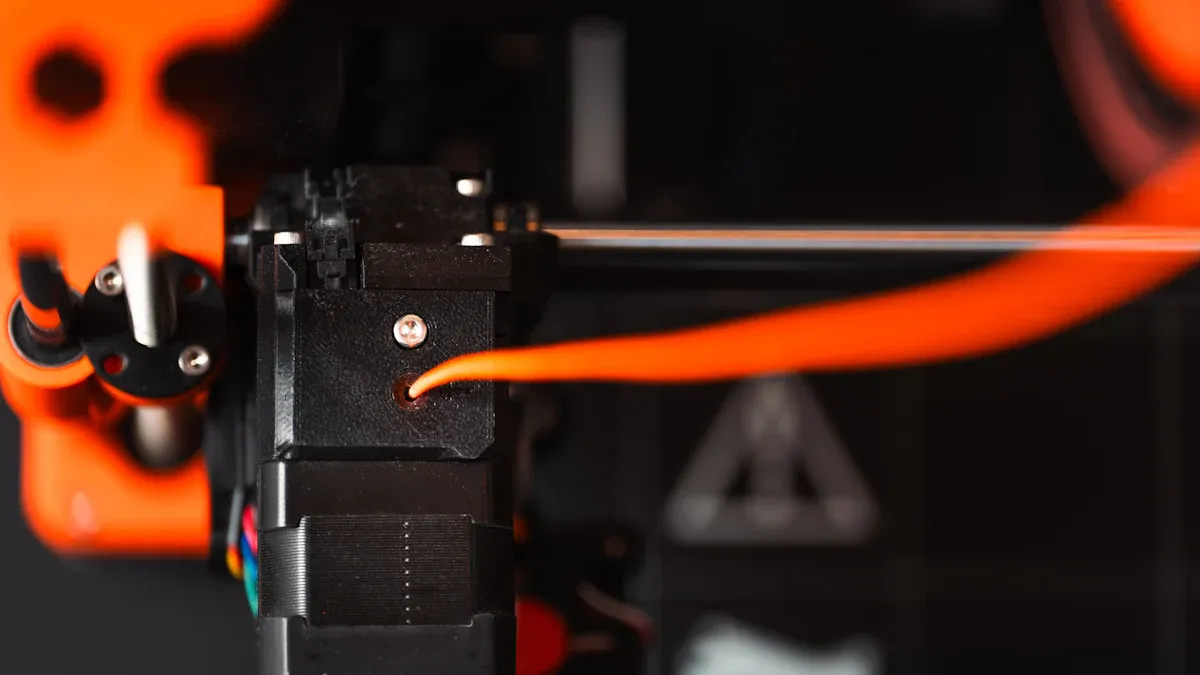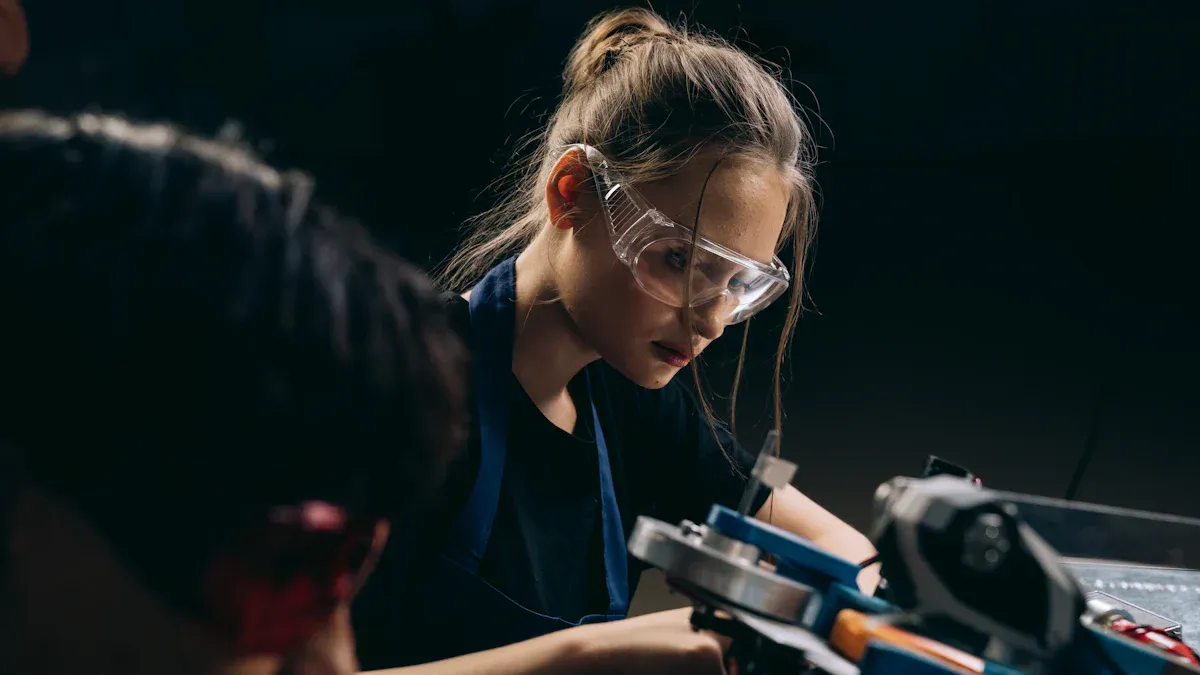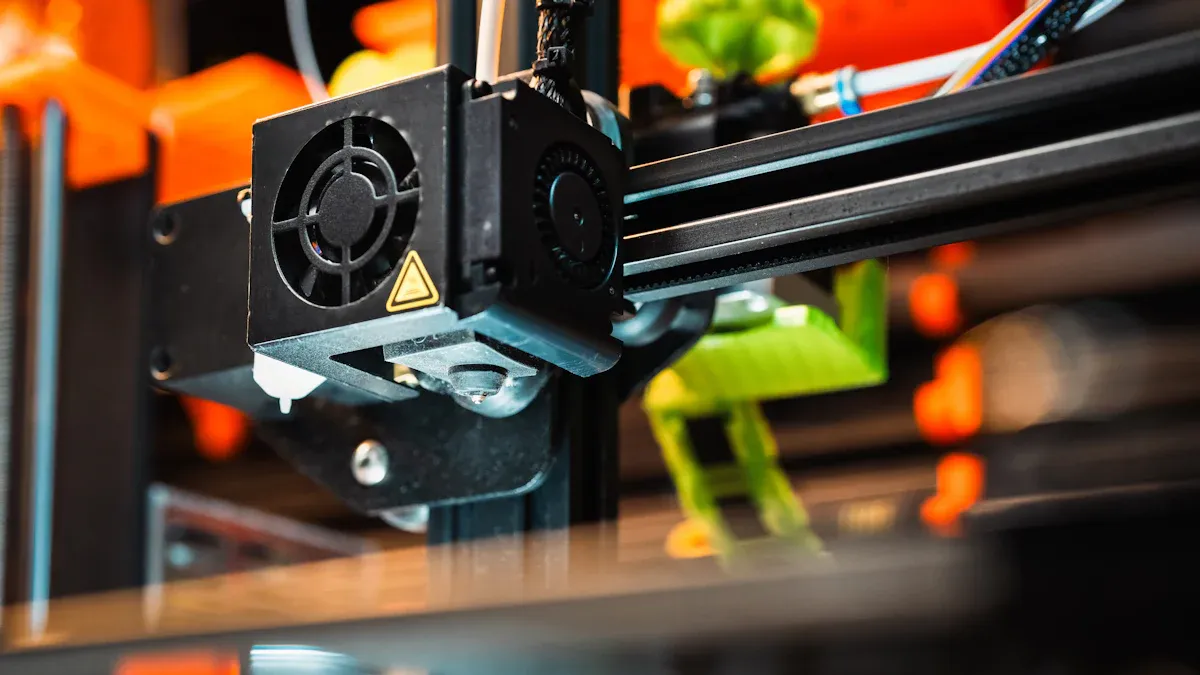
Wear part solutions refer to innovative methods designed to improve the durability, efficiency, and performance of components that face constant wear and tear. These solutions challenge industry norms by pushing boundaries. You can achieve higher efficiency, reduce costs, and embrace cutting-edge technologies through these advancements. Industries that rely on heavy machinery or high-performance equipment are undergoing significant changes because of these innovations. By rethinking materials and processes, wear part solutions are transforming how businesses operate, ensuring sustainable and long-lasting results.
In many industries, wear parts are often made from standardized materials. These materials may not always suit the specific needs of your equipment or application. Manufacturers typically rely on one-size-fits-all solutions, which can limit performance. For example, a mining drill and an agricultural plow face very different wear conditions, yet they might use similar materials. This lack of customization can lead to inefficiencies and faster wear. You might find yourself replacing parts more frequently, which increases costs and downtime.
Tip: Customizing materials to match your equipment's unique requirements can significantly improve performance and durability.
Traditional wear parts often require frequent maintenance. You may need to replace them regularly due to their limited lifespan. This cycle of maintenance and replacement can strain your budget. For industries like construction or manufacturing, where equipment operates continuously, these costs can quickly add up. Additionally, downtime during repairs can disrupt operations and reduce productivity.
By adopting modern wear part solutions, you can reduce these expenses. Advanced materials and designs offer longer-lasting components, minimizing the need for constant replacements.
Industries have historically been slow to embrace new technologies for wear parts. Many companies stick to traditional methods because they seem reliable. However, this reluctance to innovate can hold you back. Emerging technologies like additive manufacturing and advanced coatings offer significant advantages. They enhance durability, reduce waste, and improve efficiency. By staying open to innovation, you can gain a competitive edge and reduce long-term costs.
Note: Embracing new technologies in wear part solutions can future-proof your operations and improve overall efficiency.

You can significantly improve the durability and performance of wear parts by using advanced materials and coatings. Modern innovations, such as nanoporous silica films, offer exceptional abrasion resistance. Research shows that these coatings undergo rigorous testing, including quantitative image analysis and standard abrasion tests, to ensure their mechanical stability. This makes them ideal for applications where components face constant wear and tear.
Advanced coatings also reduce friction between surfaces, which minimizes energy loss and heat generation. For example, industries like mining and construction benefit from these materials because they extend the lifespan of equipment. By adopting these innovations, you can reduce maintenance costs and improve operational efficiency.
Tip: Consider using wear part solutions with advanced coatings to enhance the performance of your machinery.
Precision engineering plays a crucial role in extending the life of wear parts. By optimizing the design of components, you can ensure better load distribution and prevent strain on critical areas. This reduces the risk of material loss and deformation, which are common causes of wear.
Case studies highlight the effectiveness of precision engineering in various fields:
- Surgical instruments designed with precision engineering produce fewer wear particles, improving safety and performance.
- Optimized machine parts distribute loads evenly, preventing overload and extending equipment lifespan.
- Enhanced designs reduce surface degradation, ensuring consistent performance over time.
When you invest in precision-engineered wear part solutions, you not only improve durability but also enhance the overall reliability of your equipment.
Additive manufacturing, including 3D printing, has revolutionized the production of wear parts. This technology allows you to create components with complex geometries that were previously impossible to achieve. By tailoring designs to specific applications, you can improve the efficiency and functionality of your equipment.
Studies on graphene-reinforced PLA composites demonstrate the potential of 3D printing in wear part solutions. These composites show a 55% improvement in wear resistance compared to standard PLA. The incorporation of graphene, combined with optimized printing parameters, ensures superior performance. This means you can produce wear parts that last longer and perform better under challenging conditions.
Additive manufacturing also reduces material waste, making it a more sustainable option. By adopting this technology, you can lower production costs while contributing to environmental conservation.
Note: Explore 3D printing for wear part solutions to achieve customized designs and improved wear resistance.
Modern wear part solutions help you achieve better efficiency and performance by using advanced materials and designs. These innovations reduce friction, improve energy transfer, and ensure smoother operations. For example, wear-resistant coatings minimize surface degradation, allowing your equipment to f unction at its best for longer periods. This means you can complete tasks faster and with less effort.
Precision engineering also plays a key role in boosting performance. By optimizing the design of wear parts, manufacturers ensure that components fit perfectly and distribute loads evenly. This reduces stress on machinery and enhances its overall functionality. When your equipment operates efficiently, you save time and resources, which directly impacts your bottom line.
Tip: Regularly inspect your equipment to ensure wear parts are performing optimally. This simple step can prevent unexpected issues and maintain peak efficiency.
One of the biggest advantages of modern wear part solutions is their ability to reduce downtime and expenses. Advanced materials and predictive maintenance technologies help you avoid frequent repairs and replacements. Studies show that companies using predictive maintenance have achieved a 40% reduction in maintenance costs and a 70% decrease in machine downtime. Similarly, a McKinsey report highlights that predi ctive maintenance can lead to a 30-50% reduction in downtime and a 10-40% decrease in maintenance costs.
Wear-resistant materials also play a significant role in cutting costs. A chemical manufacturing plant, for instance, experienced a 70% reduction in part replacements after switching to these materials. By inve sting in durable components, you can minimize disruptions to your operations and save money in the long run.
Note: Consider adopting predictive maintenance tools to monitor your equipment's health. These tools can alert you to potential issues before they become costly problems.
Modern wear part solutions not only extend the lifespan of your equipment but also promote sustainability. By using durable materials and advanced coatings, you can reduce the frequency of part replacements. This minimizes waste and helps conserve resources. Practices like repairing and reusing components further contribu te to sustainability by reducing the need for new materials.
Predictive maintenance also enhances longevity by catching potential issues early. Routine inspections and monitoring ensure that your equipment operates at peak efficiency, preventing unexpected breakdowns. This approach not only saves you money but also supports a more sustainable way of operating.
Callout: Sustainability is not just about the environment. It’s also about creating long-term value for your business by reducing waste and maximizing efficiency.
By adopting modern wear part solutions, you can achieve a balance between performance, cost savings, and environmental responsibility. These innovations help you stay competitive while contributing to a more sustainable future.

Mining and construction industries rely heavily on equipment that operates in extreme conditions. Drills, excavators, and crushers face constant wear from abrasive materials like rocks and minerals. Wear part solutions play a critical role in keeping this equipment functional. For example, advanced coatings on drill bits reduce fric tion and extend their lifespan. Precision-engineered components also ensure better load distribution, preventing premature failures.
You can also benefit from reduced downtime. When equipment lasts longer, you spend less time on repairs and replacements. This means your projects stay on schedule, and you save money in the long run. By adopting modern wear part solutions, you improve both efficiency and reliability in these demanding industries.
Tip: Regularly inspect your mining and construction equipment to identify wear early. This helps you avoid costly breakdowns.
In agriculture, machinery like tractors, plows, and harvesters must endure tough conditions. Soil, moisture, and debris can cause significant wear over time. Wear part solutions help you tackle these challenges by offering durable materials and designs. For instance, wear-resistant coatings on plow blades reduce friction, making it easier to till the soil. This not only saves fuel but also extends the life of your equipment.
Precision-engineered parts also improve performance. A well-designed harvester blade cuts crops more efficiently, reducing waste and increasing productivity. By investing in wear part solutions, you ensure your equipment performs reliably throughout the farming season.
Callout: Upgrading to modern wear parts can help you save on fuel and maintenance costs while boosting productivity.
Manufacturing and production facilities depend on machinery that operates continuously. Components like conveyor belts, rollers, and cutting tools experience constant wear. Wear part solutions enhance the durability of these parts, ensuring smooth operations. For example, advanced materials like carbide coatings on cutting tools improve their resistance to wear, allowing you to maintain precision in production.
Additive manufacturing also plays a role in creating custom wear parts for specific applications. This reduces waste and ensures a perfect fit for your machinery. By adopting these solutions, you minimize downtime and maintain consistent output, which is crucial for meeting production targets.
Note: Consider using predictive maintenance tools to monitor wear in your production equipment. This helps you address issues before they disrupt operations.
Smart technologies are reshaping wear part solutions by introducing advanced features that enhance functionality and efficiency. Sensors embedded in wear parts now monitor performance and detect wear in real time. This allows you to predict maintenance needs and avoid unexpected breakdowns. For example, industries like healthcare and industrial IoT are driving the adoption of sensors that track equipment health. These innovations ensure smoother operations and reduce downtime.
The wearable technology market also highlights the growing influence of smart systems. MEMS sensors, commonly used in smart wearables, improve functionality by integrating GPS and IMU technologies. These advancements are now being applied to wear parts, enabling precise tracking and monitoring. The sensor market continues to evolve, catering to industries like future mobility and manufacturing. By adopting smart technologies, you can optimize your equipment's performance and extend its lifespan.
Tip: Consider upgrading to wear parts with integrated sensors to improve efficiency and reduce maintenance costs.
Sustainability is becoming a key focus in wear part solutions. Manufacturers are shifting toward materials that can be recycled or reused. This reduces waste and conserves resources. For example, wea r-resistant coatings now use eco-friendly compounds that minimize environmental impact. You can also benefit from practices like refurbishing worn components instead of replacing them entirely.
The circular economy model further supports sustainability. By designing wear parts for easy repair and reuse, industries reduce their reliance on raw materials. This approach not only saves costs but also promotes long-term environmental responsibility. When you adopt sustainable wear part solutions, you contribute to a greener future while improving operational efficiency.
Callout: Sustainability in wear parts isn't just good for the planet—it also creates value for your business by reducing waste and costs.
Wear part solutions are driving a transformation across industries. Advanced technologies and sustainable practices are setting new standards for efficiency and durability. You can see this shift in sectors like mining, agriculture, and manufacturing, where modern wear parts improve productivity and reduce costs.
Smart technologies are playing a significant role in this transformation. For instance, the integration of sensors into wear parts allows industries to adopt predictive maintenance strategies. This reduces downtime and enhances reliability. The global smart clothing market also demonstrates how technology is influencing wear part solutions, with features like biometric monitoring paving the way for smarter systems.
As industries embrace these innovations, traditional practices are being replaced with more efficient and sustainable methods. By staying ahead of these trends, you can position your business for long-term success.
Note: Industry-wide transformation starts with adopting modern wear part solutions that align with future trends.
Wear part solutions are revolutionizing industries by improving efficiency, cutting costs, and driving innovation. These advancements challenge outdated practices, offering you tools to enhance performance and sustainability. By adopting modern solutions, you can reduce downtime, extend equipment lifespan, and stay competitive in a rapidly evolving market. The future belongs to those who embrace change. Explore these solutions today to unlock new possibilities for your business.
Tip: Start small by upgrading a single component and see the difference it makes in your operations.
Wear part solutions involve innovative methods to improve the durability and performance of components exposed to wear and tear. These solutions use advanced materials, coatings, and designs to extend the lifespan of parts, reduce maintenance, and enhance efficiency.
They minimize maintenance and replacement needs by using durable materials and precision engineering. This reduces downtime and operational disruptions, saving you money over time.
Yes! Modern wear part solutions use recyclable materials and promote practices like refurbishing components. This reduces waste and supports a circular economy, helping you operate more sustainably.
Absolutely! Many solutions offer tailored designs and materials to meet specific industry needs. Customization ensures better performance and longer-lasting components for your equipment.
Begin by identifying the most frequently replaced parts in your equipment. Consult with experts to explore advanced materials or coatings that suit your needs. Start small and scale up as you see results.
Tip: Partner with a trusted supplier to ensure high-quality wear part solutions for your business.